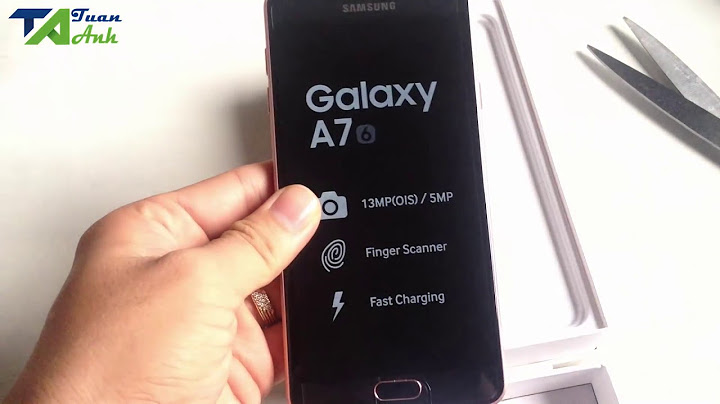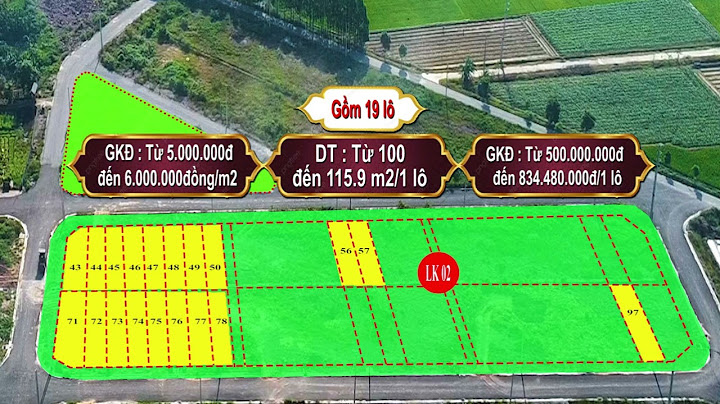We’ve been running an 802.11ac network for a while, but the only client we’ve trusted to provide true 802.11ac speed thus far has been a wireless bridge. You see, we had a lot of experience with 802.11n USB adapters, and most left us unimpressed. Quite a few have simply under-performed from the start, while others had poor driver support and did not work properly under Windows 8.1. How could moving up to the more taxing 802.11ac standard help the situation? Well, several years have passed since 802.11ac hit the stage, and while a number of half-hearted attempts at an 802.11ac adapter have been introduced over that time, Netgear has finally delivered a robust USB adapter worthy of running an 802.11ac network. In other words, we have a new favorite! Show
 Description and Features The Netgear A6210 AC1200 WiFi USB 3.0 Adapter is a two-stream 802.11ac device, offering a rated 867Mbps on the 5GHz band and 300MBps on the 2.4GHz band (hence the AC1200 in the official model name). Perhaps living up to its somewhat lengthy name, the A6210 is quite a large device, measuring 3.25″ x 1.25″ x 5/8″, and nearly 6″ fully extended, not including the USB jack. It includes a custom-designed base to allow for desktop use, and the effort that went into creating this slick piece of equipment suggests the reality that Netgear likely had in mind; this is really a USB adapter intended for desktop PCs. While it can be inserted directly into a USB port, on many systems, it actually won’t fit due to its width, at least if you have anything in adjacent ports. Furthermore, it’s so large and heavy that installing it in a laptop is begging for it to be knocked out or to fall out on its own accord. Unless your laptop is sitting firmly on a desk and not moving anywhere, you simply won’t want to use this adapter for laptop networking. Performance Of course, all is forgiven when you plug the A6210 into its form-fitting cradle, fire up a desktop PC, and realize that it can hit sustained transfer rates of over 25MB/s, or faster than is possible on most USB 2.0 thumb drives. Paired with our Linksys EA 6900 router, we measured the time it took the A6210 to transfer 1GB of JPEG files between two PCs on our network. We acheived 234Mbps, or nearly 30MB/s, meaning it’s faster to transfer files over your intranet using the A6210 than to plug in a USB 2.0-based device and copy it over the old-fashioned way. That also means that the A6210 really does utilize the bandwidth provided by the USB 3.0 standard, and maximum throughput will not be achieved when plugged into a USB 2.0 port. In fact, the A6210 is so fast that it nearly matches the fastest client tested here at The Tech Buyer’s Guru, the Western Digital MyNet AC1300 wireless bridge, which has the benefit of a three-stream, rather than two-stream design, dedicated AC power, and the form factor of a router, not a USB stick.  Now before we get too carried away, we should note that transfer rates were not as fast once we got further away from the router, as one would expect. In addition, we actually couldn’t install the A6210 on one of the five test systems we tried it on – a new ultra-small Zotac ZBOX BI320 desktop PC. The installation application could not find the adapter despite it being plugged into a USB 3.0 port. We contacted Netgear about the issue but did not hear back. We’re guessing it was an issue with the desktop, rather than the A6210 application, but it was somewhat unusual. Conclusion In the end, the Netgear A6210 is the best laptop wireless adapter that you’ll never want to use in a laptop, or the most elegant desk ornament that happens to warp your desktop PC to wireless lightspeed. To say we like it would be an understatement, but it comes in just under a perfect score because Netgear is marketing this to laptop owners, who are going to be better served by a more compact 802.11n device. The Netgear A6210 is available for $56.99 shipped from Newegg and Amazon, as of our most recent update. Plugging in a USB adapter is one of the easiest ways to add 802.11ac Wi-Fi access to a desktop PC, especially if you don’t want to (or are unable to) install an internal card yourself. After 50 hours of testing 20 models against a high-end laptop’s internal Wi-Fi, we are confident the TP-Link Archer T4U is the best USB Wi-Fi adapter for most people. Everything we recommendOur pick The Archer T4U has better performance than the internal Wi-Fi adapter built into our test laptop and is relatively inexpensive. It also has extensive driver support, so it works with Linux computers, Macs, and Windows PCs. Buying OptionsBudget pick The diminutive Archer T2U Plus has about half the Archer T4U’s performance at short range, but it's a bit faster when farther away. It’s the best one to get if you want to spend $25 or less. Buying OptionsUpgrade pick The Netgear Nighthawk A7000 costs significantly more than our other picks, but it’s the one you want for speedy file transfers and large downloads. Buying OptionsOur pick The Archer T4U has better performance than the internal Wi-Fi adapter built into our test laptop and is relatively inexpensive. It also has extensive driver support, so it works with Linux computers, Macs, and Windows PCs. Buying OptionsThe TP-Link Archer T4U is inexpensive, had excellent throughput performance all over our test home, didn’t drop connections while we were testing, has a two-year warranty, and works with Linux computers, Macs, and Windows PCs. Budget pick The diminutive Archer T2U Plus has about half the Archer T4U’s performance at short range, but it's a bit faster when farther away. It’s the best one to get if you want to spend $25 or less. Buying OptionsThe TP-Link Archer T2U Plus is a little bulkier than the Archer T4U, due to its 6-inch external antenna, and it didn’t perform as well. But it’s still very good and was the only sub-$25 adapter to complete all of our tests. It has an identical two-year warranty and is just as compatible with Macs and Windows or some Linux PCs. Upgrade pick The Netgear Nighthawk A7000 costs significantly more than our other picks, but it’s the one you want for speedy file transfers and large downloads. Buying OptionsThe Netgear Nighthawk A7000 is a bulky USB adapter that costs almost three times as much as the budget Archer T2U Plus. However, the trade-off is worth it if your broadband connection is faster than 200 Mbps. It posted our top throughput scores all over our test home, significantly outperforming other Wi-Fi adapters. The researchWhy you should trust usBefore joining Wirecutter, Joel Santo Domingo tested and wrote about PCs, networking products, and personal tech at PCMag.com and PC Magazine for more than 17 years. Prior to writing for a living, Joel was an IT tech and system administrator for small, medium, and large companies. Testing wireless home networking has been a part of Joel’s life for the past 20-odd years through all versions of Wi-Fi, back to the wireless phone extension he tacked on the back of his Apple PowerBook. He did this so he could dial in to the Internet from his desk, his couch, and his bed (a rarity for the late 1990s). Who this is forIf your PC came with built-in Wi-Fi, most folks will be happy without buying an external dongle; usually the computer will feel slow and become obsolete before the Wi-Fi radio does. But for desktop PCs without built-in Wi-Fi, a USB Wi-Fi adapter takes seconds to install and set up, no screwdrivers needed. It’s a lot easier than the alternatives—installing an internal Wi-Fi network card or running Ethernet cable through your home. Though they’re mainly useful for desktops, USB Wi-Fi adapters are also a way to upgrade an older laptop to Wi-Fi or replace an internal card that’s no longer working without opening up your laptop. There are also limited cases when your laptop’s internal antennas are just awful. In those cases, an external Wi-Fi adapter can make a weak connection usable. How we picked Photo: Rozette Rago We looked for Wi-Fi 5 and Wi-Fi 6 (also known as 802.11ac and 802.11ax, respectively) USB Wi-Fi adapters from the major manufacturers, as well as others that appeared often in online searches and on shopping sites. We immediately disqualified 802.11n-only adapters, since that standard is over 10 years old. We chose each adapter using the following criteria:
We looked at reviews from trusted sources like PCMag, SmallNetBuilder, and Tom’s Hardware, but reviews for individual USB Wi-Fi adapters aren’t very common. We acquired over 20 adapters, including older and new models from Asus, D-Link, Edimax, Linksys, Netgear, Trendnet, and TP-Link. How we testedWe plugged each USB adapter into the USB 3.2 Gen 1 (aka USB 3.0) port of a Lenovo ThinkPad running Windows 10. We mostly relied on Windows Update to load an appropriate driver, since we found that the drivers it automatically installed were as new or newer than what was available from most manufacturers’ websites. If the driver wasn’t automatically loaded, we noted this and downloaded the driver from another source or online, as we had to do with the D-Link DWA-171 adapter. We ran all of our tests on its PCIe solid-state drive and USB 3.1 Gen 1 port, which were fast enough to avoid bottlenecking the adapters we tested. We connected a desktop PC via Ethernet to a TP-Link Archer AX50 Wi-Fi router as our file server, linked each Wi-Fi USB adapter to the router, and used our to check each adapter’s ability to transfer data as fast as possible. The Archer AX50 was placed in the family room on the first floor of the 2,300 square-foot home, where the internet enters the house. We placed the Lenovo ThinkPad laptop at two testing points within the home. The close-range test location was within line of sight of the router, 7 feet away. The long-range testing location is in a basement corner bathroom on the other side of the home, about 75 feet away, with the underground foundation of the house on two sides of the room. The signal to the bathroom has to pass through the floor and several walls. We measured the throughput at both locations and used that data to determine our picks. Our pick: TP-Link Archer T4U V3 Photo: Rozette Rago Our pick The Archer T4U has better performance than the internal Wi-Fi adapter built into our test laptop and is relatively inexpensive. It also has extensive driver support, so it works with Linux computers, Macs, and Windows PCs. Buying OptionsThe TP-Link Archer T4U is the best USB Wi-Fi adapter for most people. It typically sells for around $40, and it performed well on our throughput tests, just behind our upgrade pick, the . And as with all our picks, we had no problems with dropped connections during testing. Though it has a AC1300 rating (400 Mbps on the 2.4 GHz band and 867 Mbps on the 5 GHz band), the Archer T4U was able to perform better than the Asus USB-AX56 and D-Link DWA-X1850, both of which have a supposedly faster AX1800 Wi-Fi 6 rating (600 Mbps on 2.4 GHz and 1,200 Mbps on 5 GHz).  The TP-Link Archer T4U is a long, flat stick with a flexible antenna. Photo: Rozette Rago Make/modelSpeed at 8 feet, in MbpsSpeed at long distance, in MbpsTP-Link Archer T4U19463TP-Link Archer T2U Plus11670Netgear Nighthawk AC1900 (A7000)467141Asus USB-AX5618484D-Link DWA-X18501949 When we updated our testing methods for Wi-Fi 6, the Archer T4U was able to keep up with or exceed the speeds of Wi-Fi 6 USB adapters like the Asus USB-AX56 and the D-Link DWA-X1850. The T4U’s speed at close range matched the DWA-X1850’s, and it exceeded that of the USB-AX56, though there wasn’t much of a difference. Notably, the T4U provided a strong, speedy signal in the basement bathroom location, where the DWA-X1850 was far too slow for 4K video streaming. The USB-AX56 is a bit faster in the basement bathroom, but this difference would be negligible when browsing or viewing videos. The TP-Link T4U has been our top pick since 2019, when it was near the top of the seven of 22 USB adapters that made our cut by being able to copy large file transfers in a reasonable amount of time. This result (along with pricing and other factors) led to us naming the T4U as our pick for Wi-Fi USB adapters. Build quality is good: the adapter has a sturdy case and antenna hinge. Beamforming and MU-MIMO are both supported by the Archer T4U, and Windows automatically loaded an up-to-date driver within seconds after we plugged the adapter into the laptop. TP-Link’s USB adapters come with a two-year warranty, which is double the length of most of the other manufacturer warranties, including those of Asus, Linksys, and Netgear. The Archer T4U has some of the best driver support among the Wi-Fi adapters; it will work with computers running macOS, and Windows. There is some support for Linux, but only up to kernel 4.11, which was released in 2017. Flaws but not dealbreakersThe Archer T4U is a fairly bulky stick, measuring 3.64 by 1.24 by 0.55 inches (LWH), with an external antenna that swings up and out to 180 degrees relative to our test laptop’s keyboard. You can use the adapter with the antenna closed, but we tested it vertically at 90 degrees, like the other adapters with external antennas. It comes with a USB extension cradle, so you can place the adapter in a more convenient location. Budget pick: TP-Link Archer T2U Plus Photo: Rozette Rago Budget pick The diminutive Archer T2U Plus has about half the Archer T4U’s performance at short range, but it's a bit faster when farther away. It’s the best one to get if you want to spend $25 or less. Buying OptionsThe TP-Link Archer T2U Plus is a compact USB Wi-Fi adapter with a 6-inch antenna permanently attached to its end. It’s not as fast at long range as the Archer T4U, but it should be your go-to if you want to save as much money as possible but still need a solid wireless connection throughout your home. It has an AC600 rating (200 Mbps on 2.4 GHz, 433 Mbps on 5 GHz) and doesn’t support beamforming or MU-MIMO, but it was the only adapter in the $20 price range to complete our testing at the long-range test location; the other seven USB adapters that completed all our tests cost between $30 and $90.  The Archer T2U is shorter and slimmer than the T4U, but its antenna is longer. Photo: Rozette Rago On our updated tests with a Wi-Fi 6 router, the T2U Plus lagged behind the T4U at close range, but was a little faster at long range. What’s really notable is that the T2U Plus was more effective at long range than the Wi-Fi 6 equipped D-Link DWA-X1850, which costs four times as much. The lengthy antenna no doubt contributed to this, as the D-Link has an internal antenna that was less effective at long range. In our 2019 testing, the T2U Plus was competitive, but lagged behind the T4U overall. The adapter has a thinner, lighter case than the Archer T4U, though you’ll need clearance for the long antenna. Its articulated connection to the adapter’s case feels robust. The Archer T2U Plus also has an excellent two-year warranty and works with macOS and Windows. Upgrade pick: Netgear Nighthawk A7000 Photo: Rozette Rago Upgrade pick The Netgear Nighthawk A7000 costs significantly more than our other picks, but it’s the one you want for speedy file transfers and large downloads. Buying OptionsIf your daily routine includes multiple large file transfers, or if you’re paying for a broadband data plan with a 100 Mbps or higher limit, the Netgear Nighthawk A7000 is worth the upgrade. It has an AC1900 rating (600 Mbps on 2.4 GHz and 1,300 Mbps on 5 GHz), a bump up from the Archer T4U’s AC1300 rating. It costs roughly double the price of the Archer T4U, but it was the throughput winner across the board, beating all 5 USB Wi-Fi adapters as well as two new adapters rated for Wi-Fi 6. Make/modelSpeed at 8 feet, in MbpsSpeed at long distance, in MbpsTP-Link Archer T4U19463TP-Link Archer T2U Plus11670Netgear Nighthawk AC1900 (A7000)467141Asus USB-AX5618484D-Link DWA-X18501949 On our Wi-Fi 6 tests, the A7000 was twice as fast or faster than the other adapters we tested, including the new Asus and D-Link Wi-Fi 6 adapters. At close range, the A7000 was able to transfer data at over double the rates of the Archer T4U, DWA-X1850, and Asus USB-AX56. At long range in the basement bathroom, the A7000 was the only adapter able to break the 100 Mbps barrier, while the T4U, USB-AX56, were significantly behind (with the DWA-X1850 achieving an abysmal 9 Mbps). If you need to move a lot of files locally to a NAS or between computers, if you’re a gamer waiting for updates, or if you’re downloading movies from the internet, the A7000 more than justifies its higher price tag.  The Nighthawk A7000’s large size may make it an awkward fit for some computers; Netgear includes an extension cable and a stand so you can find a more convenient place for it on your desk. Photo: Rozette Rago The A7000 is significantly larger than the Archer T4U, measuring 4.7 by 1.8 by 0.87 inches (LWH), but it needs that chunky chassis for multiple radios, a swing-out antenna, and room for cooling vents. It supports beamforming and MU-MIMO, and it comes with an external USB cradle so you can reposition it on your desk. It only has a one-year warranty, and while that’s sufficient for most people, the TP-Link adapters do offer a two-year warranty for a lower price. The A7000 is Mac- and Windows–compatible. We did have to download the Windows driver from Asus’ website before testing, a small inconvenience. What to look forward toRouters supporting the 802.11ax protocol (also known as Wi-Fi 6) are becoming commonplace, along with internal 802.11ax adapters for laptops. We’ve tested the first two Wi-Fi 6 adapters (see below), but so far they’re not as fast as our Wi-Fi 5 upgrade pick. Adding to the potentially confusing situation, are starting to appear on networking websites. However, like all new networking technologies, it will take some time before Wi-Fi 6 and 6e hardware becomes common enough and cheap enough to make the upgrade worth it. You’ll need to have multiple Wi-Fi 6 or 6e devices (routers, laptops, phones, media streaming devices, and TVs) on your network to justify the expense of upgrading.We’ll be testing the new technology as it’s ready. The competitionThe D-Link DWA-X1850 was the first Wi-Fi 6 USB adapter to reach the market, and while it features newer technology, it performed poorly on our long-distance test with a Wi-Fi 6 router. It has an internal antenna, which may have contributed to its low performance. It is more expensive than our pick, only works with Windows 10, and has a short, one-year warranty. We’d recommend getting our pick or upgrade pick over the DWA-X1560. The Asus USB-AX56 was the second Wi-Fi 6 USB adapter released, and it is similar to the Asus USB-AC68 below. Its pop-out antennas helped it maintain a strong signal in the basement bedroom location, but the AX56 still lagged behind the Netgear A7000 at both testing locations. We also had to download the AX56’s Windows driver from the internet, a minor inconvenience. The AX56 includes a driver CD, but few laptops come with a drive that can read it. The USB-AX56 is about the same price as the A7000. Like the Nighthawk A7000, the Asus USB-AC68 is a large expensive stick with a pair of pop-out antennas. While its performance at the long distance testing point was adequate, the A7000 trounced the AC68’s throughput results, though the Asus adapter is about the same price. The D-Link DWA-192 tested well for PCMag and Tom’s Hardware, but those tests happened in the early days of 802.11ac and many newer adapters have come out since then. It performed well on our tests, but it is expensive, and its external ball-shaped housing isn’t as portable as our picks. The Netgear A6210 completed all of the tests within time limits, but it was the slowest adapter we tested that did so. The A6210’s price is double that of the T2U Plus, sealing its fate in last place. The D-Link DWA-171 completed three of the long-range transfer tests, but it took longer than 45 minutes to copy the music files folder in the bathroom. One oddity was that the DWA-171 didn’t automatically load Windows 10 drivers when plugged in. It has a built-in thumb drive with an installer for the drivers, which is a lot more inconvenient as we couldn’t use the adapter until we installed the driver manually. We checked Windows Update after getting online, and it loaded an up-to-date driver. The rest of the adapters we tested failed our long-range tests, whether they were mini/nano–sized (the type of USB adapter that sticks out less than an inch or so and can be left plugged into the laptop when you store it in a bag) or larger sticks with room for better antennas and radios. The mini/nano–sized adapters that took too long to complete the tests included the Asus USB-AC53 Nano, Edimax EW-7822UTC, Edimax EW-7822ULC, Linksys WUSB6100M, TP-Link Archer T2U, TP-Link Archer T2U Nano, TP-Link Archer T3U, and the Trendnet TEW-808UBM. The larger sticks that took too long were the Asus USB-AC56, Edimax EW-7833UAC, Linksys WUSB6400M, and the TP-Link Archer T9UH. The Trendnet TEW-809UB was the largest and most notable adapter to not pass the tests: it is a large external block with four external antennas, and at the time it costs more than the Nighthawk A7000. Sources
Meet your guide Joel Santo Domingo is a senior staff writer covering networking and storage at Wirecutter. Previously he tested and reviewed more than a thousand PCs and tech devices for PCMag and other sites over 17 years. Joel became attracted to service journalism after answering many “What’s good?” questions while working as an IT manager and technician. Is Netgear AC1200 WiFi USB adapter good for gaming?NETGEAR AC1200 WiFi Dual Band Adapter Wirelessly connect your notebook or desktop computer to an 11ac network for applications such as lag-free, HD streams throughout your home, online gaming and a secure and reliable connection to the Internet. What is the disadvantage of USB WiFi adapter?A USB adapter doesn't take much space. You can use it on a PC or a desktop. Con: - The Sad thing about a USB adapter is that they don't come with an external antenna, which makes them less powerful. Most of the users complain of lower speeds with USB adapters. Does a USB WiFi adapter give you better WiFi?A USB WiFi adapter overrides the computer's built-in wireless functionality, giving you a faster, more reliable connection to your available network signals through the USB port instead. Since most computers have at least one USB port, you'll typically be able to use it on both laptops and desktops. Is Netgear adapter good?Good for general browsing, bad for gaming. Out of the box it was great, stable connection and easy installation. The signal is great and with the added extension has good range. Compared to my old adapter I was breezing through youtube and regular browsing and It's decent when gaming as well. |




















